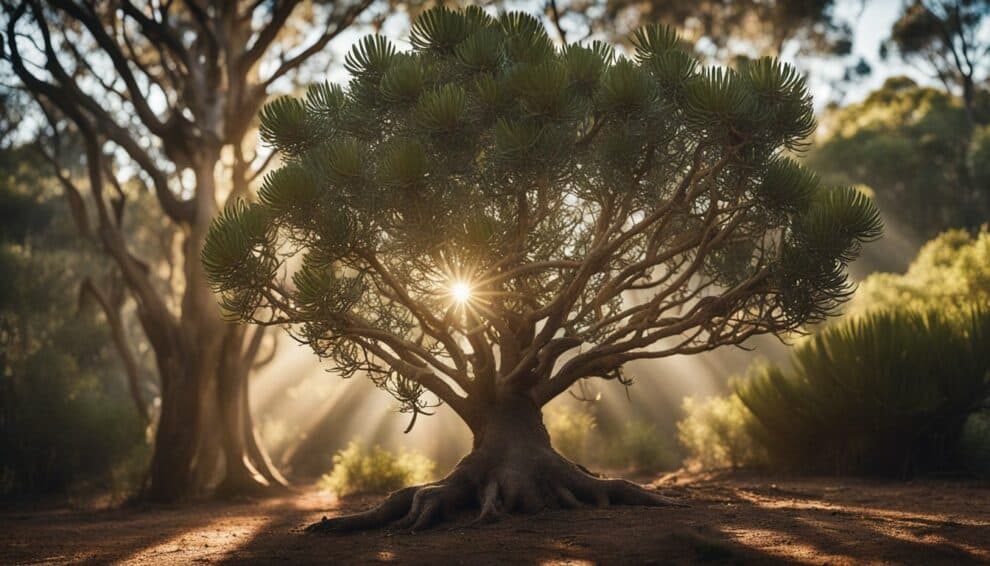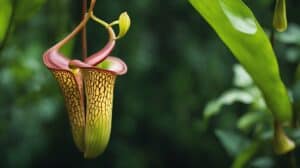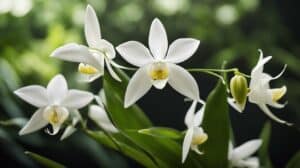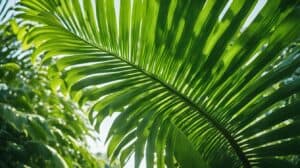Banksia Serrata, commonly known as Old Man Banksia, is a native Australian plant that has been capturing the attention of gardeners and nature enthusiasts alike.
With its unique appearance and impressive height, Old Man Banksia is a popular choice for those looking to add a touch of Australian flora to their gardens.

This species of Banksia is known for its distinctive, gnarled trunk and silver-grey foliage, which gives it a striking appearance.
Its flowers, which bloom from autumn to winter, are also a sight to behold.
The large, cylindrical flower spikes are covered in hundreds of tiny, yellowish-brown flowers, which attract a variety of native birds and insects.
Despite its popularity, Old Man Banksia is not without its challenges.
It requires well-draining soil and plenty of sunlight to thrive, making it unsuitable for some gardeners.
However, for those willing to put in the effort, the rewards are well worth it.
In this article, we will explore the charm and unique qualities of Banksia Serrata and provide tips on how to successfully grow and care for this remarkable plant.
Discovering Banksia Serrata

Banksia Serrata, also known as Old Man Banksia, is a unique and fascinating plant species that is native to Australia.
This plant is well-known for its distinctive appearance, and it is often used in landscaping and gardening due to its attractive features.
In this section, we will explore the botanical profile and natural habitat of Banksia Serrata.
Botanical Profile
Banksia Serrata is a medium-sized tree that can grow up to 10 meters in height.
It has a distinctive trunk that is covered in rough, corky bark that resembles the skin of an old man.
The leaves of Banksia Serrata are long and narrow, and they have serrated edges that give the plant its name.
One of the most striking features of Banksia Serrata is its flowers.
The flowers are large and cone-shaped, and they are made up of hundreds of individual flowers that are densely packed together.
The flowers bloom in the winter months, and they are usually a bright yellow or orange color.
Natural Habitat
Banksia Serrata is native to the eastern coast of Australia, where it grows in a variety of habitats, including coastal heathlands, woodlands, and forests.
The plant is well-adapted to the harsh conditions of its natural habitat, which can include drought, fire, and poor soil quality.
Banksia Serrata is an important part of the ecosystem in its natural habitat, providing food and shelter for a variety of animals, including birds, insects, and mammals.
The plant is also used in traditional medicine by indigenous Australians, who use the leaves and flowers to treat a range of ailments.
In conclusion, Banksia Serrata is a fascinating and unique plant species that is well worth exploring.
Whether you are a gardener looking for an attractive addition to your landscape, or a nature enthusiast interested in learning more about Australia’s native flora, Banksia Serrata is sure to impress.
Cultivation and Care

Planting Guidelines
Banksia Serrata, also known as Old Man Banksia, is a hardy plant that can grow in a variety of soil types.
However, it prefers well-draining soil with a pH between 5.5 and 7.5. It can be planted in full sun or partial shade, but it will thrive in full sun.
When planting Banksia Serrata, it is important to dig a hole twice as wide as the root ball and just as deep.
The plant should be placed in the hole and backfilled with soil, making sure to tamp down the soil around the roots.
Water the plant thoroughly after planting.
Maintenance and Pruning
Banksia Serrata is a low-maintenance plant that requires little care once established.
However, it is important to water the plant regularly during the first year of growth to help establish a strong root system.
Pruning should be done in late winter or early spring. Dead or damaged branches should be removed, and the plant should be shaped as desired.
It is important to avoid cutting back into old wood, as this can lead to dieback.
In addition to pruning, Banksia Serrata can benefit from the application of a slow-release fertilizer in early spring.
This will help promote healthy growth and flowering.
Overall, Banksia Serrata is a beautiful and easy-to-care-for plant that can add charm to any garden.
With proper planting and maintenance, this plant can thrive for years to come.
Ecological Significance

Role in the Ecosystem
Banksia Serrata, commonly known as Old Man Banksia, plays a vital role in the Australian ecosystem.
It is a keystone species, meaning that it has a significant impact on the environment and other organisms.
The plant provides a source of food and habitat for a wide range of animals, including insects, birds, and mammals.
The nectar-rich flowers attract a variety of pollinators, such as honeyeaters, bees, and butterflies.
The plant’s cones, which contain seeds, are also an important food source for birds and small mammals.
In addition to providing food and habitat, Banksia Serrata also helps to maintain soil stability and prevent erosion.
The plant has a deep root system that helps to anchor the soil, making it less susceptible to erosion.
The leaves and bark of the plant also contain compounds that help to break down organic matter, releasing nutrients into the soil and promoting healthy soil conditions.
Adaptations to Fire
Banksia Serrata has evolved to survive in the harsh Australian environment, which is characterized by frequent wildfires.
The plant has several adaptations that allow it to survive and even thrive after a fire.
One such adaptation is the ability to resprout from its lignotuber, a woody swelling at the base of the plant that stores nutrients and water.
This allows the plant to quickly regenerate after a fire, producing new growth within weeks.
Another adaptation is the thick, corky bark that protects the plant from the intense heat of a fire.
The bark is also impervious to the heat of the sun, which helps to conserve moisture during periods of drought.
The leaves of the plant are also adapted to survive in a fire-prone environment.
They are tough and leathery, with a waxy coating that helps to prevent water loss and protect the plant from the heat of a fire.
Overall, Banksia Serrata is an important and fascinating plant that plays a crucial role in the Australian ecosystem.
Its adaptations to fire and its ability to provide food and habitat for a wide range of animals make it an essential component of the environment.
Frequently Asked Questions

What cultural significance does the Old Man Banksia hold in indigenous traditions?
The Old Man Banksia, also known as Banksia serrata, holds significant cultural importance in indigenous traditions.
It is considered a sacred plant by the Aboriginal people, who use it for various purposes.
The flowers and seed cones of Banksia serrata are used for medicinal purposes, and the wood of the plant is used to make tools and weapons.
How does the Old Man Banksia adapt to its environment?
Banksia serrata is a hardy plant that has adapted to various environments.
It has a deep root system that enables it to survive in dry conditions, and its leaves are tough and leathery, which helps it to retain moisture.
The plant is also able to regenerate after bushfires, as the heat from the fire causes its seed pods to open and release seeds.
What are the ideal growing conditions for Banksia serrata?
Banksia serrata thrives in well-drained soils that are slightly acidic. It prefers full sun but can tolerate some shade.
The plant is native to coastal areas of Australia and is well-suited to coastal gardens.
It is also drought-tolerant and can survive in areas with low rainfall.
Can you explain the unique features of Banksia serrata’s flowers and seed cones?
Banksia serrata has unique flowers and seed cones that make it a popular ornamental plant. The flowers are cylindrical in shape and can be up to 15cm long.
They are made up of hundreds of tiny flowers and are usually yellow or orange in color. The seed cones are also cylindrical and can be up to 10cm long.
They are woody and have a rough texture.
What wildlife is typically attracted to the Old Man Banksia?
Banksia serrata is a popular plant for attracting wildlife.
The nectar-rich flowers attract a variety of birds, including honeyeaters and lorikeets, while the seed cones provide food for cockatoos and other seed-eating birds.
The plant is also home to a variety of insects, including bees and butterflies.
How can I propagate Banksia serrata in my own garden?
Banksia serrata can be propagated from seed or cuttings. To propagate from seed, collect the seed pods when they are fully mature and dry.
Remove the seeds from the pods and plant them in well-drained soil.
To propagate from cuttings, take a cutting from a healthy plant and plant it in a pot filled with well-drained soil.
Keep the soil moist and place the pot in a warm, sunny location.














